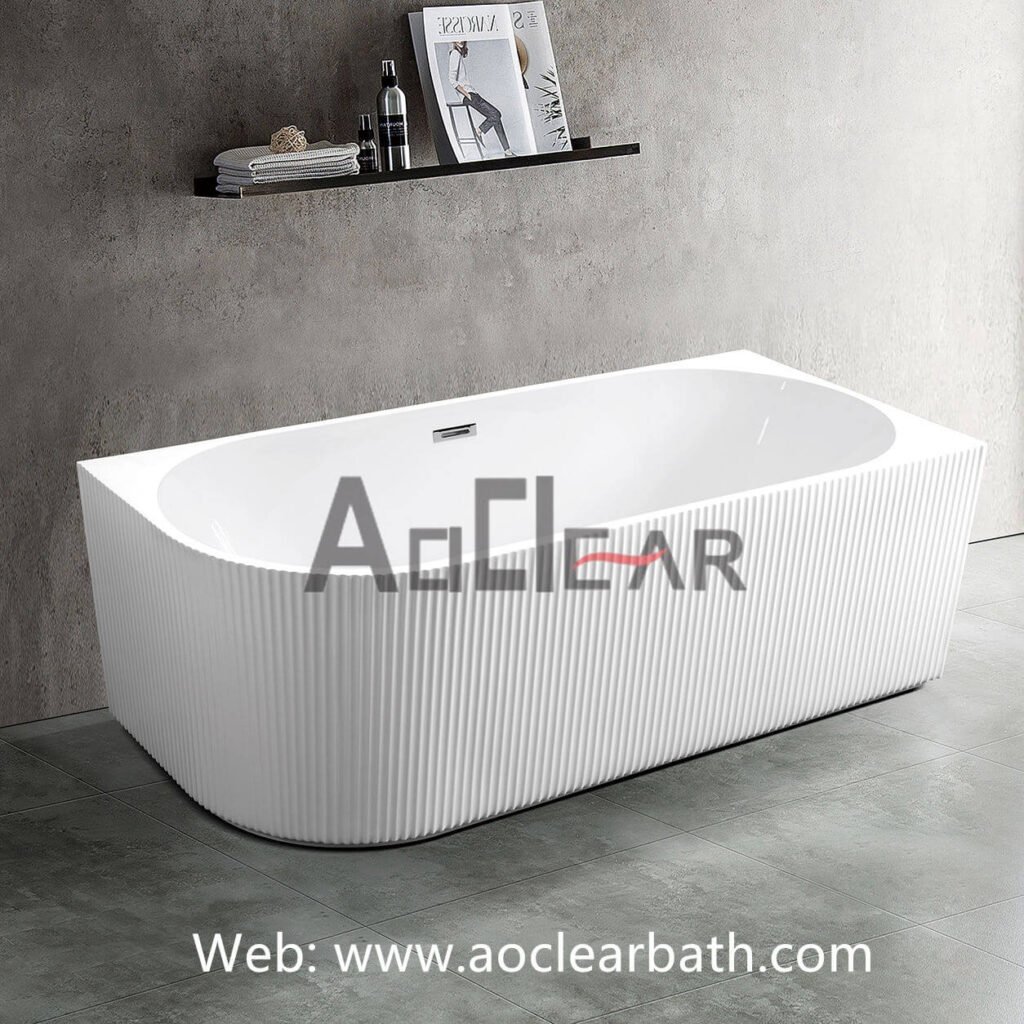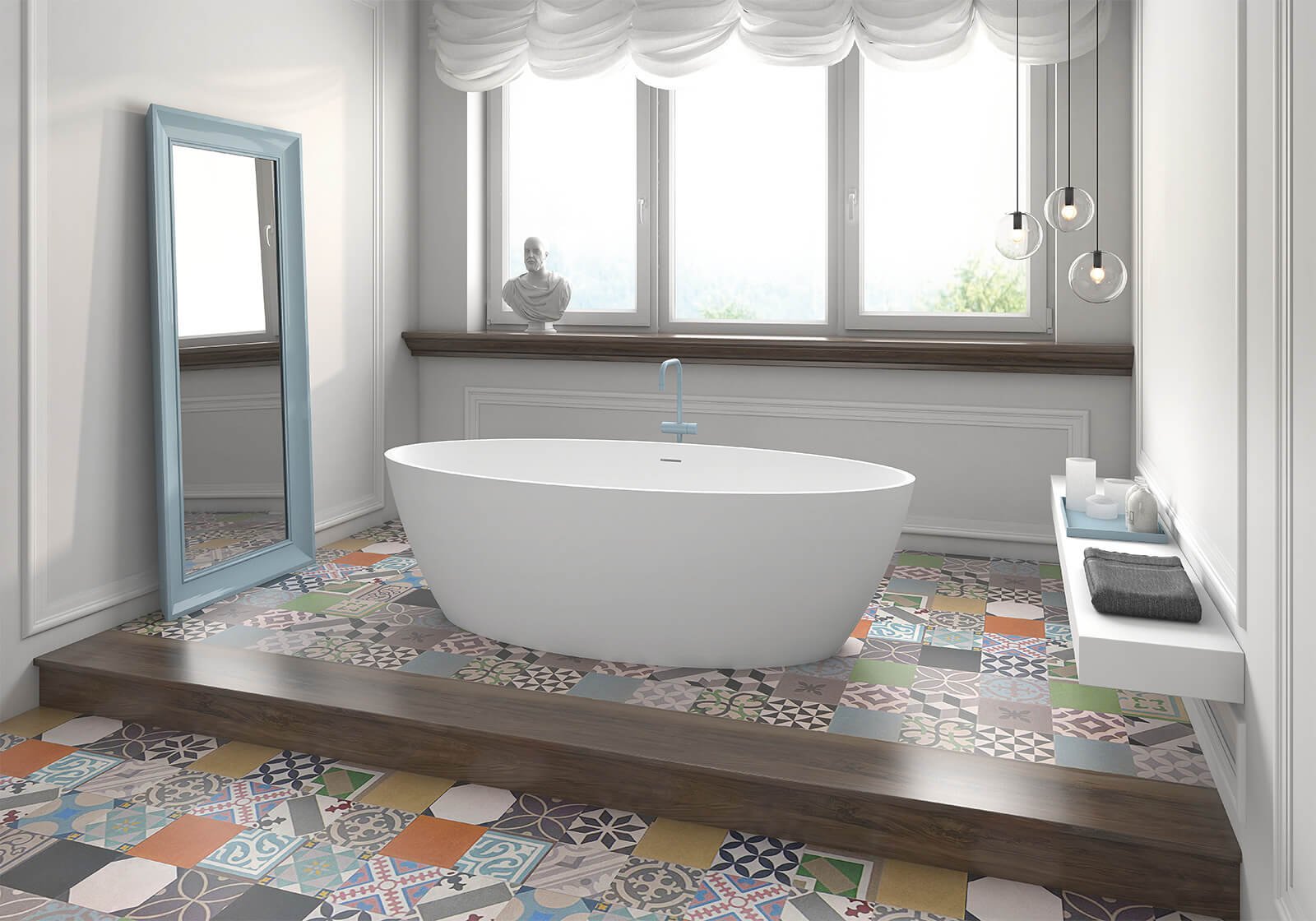When searching acrylic tubs, you will find information claiming that they turn yellow and others do not. It can be confusing, especially when there are few explanations and contradictory facts.
Acrylic bathtubs are durable and have impressive functionality but are not exempt from discoloration. If not properly maintained, it yellows over time. Harsh cleaners, chemicals, colored bath products, grimes, and aging can all cause your bathtub to turn yellow.
This kind of bathtub discolors for a reason. If you’re curious about what’s causing this and how to avoid it, continue reading to the next part.
Why and How Do Acrylic Tubs Discolor?

To answer first the question, yes, acrylic baths turn yellow. If you have noticed yellow stains in your tub even though you maintain them regularly, you will need to know the root cause before coming up with a solution.
These kinds of bathtubs discolor due to many factors. It may be from the things you use on your tub, which includes the water, bath products, and cleaners, or improper maintenance.
To know more, here are the factors discussed in detail:
Tannins
Tannins happen when leaves, branches, or vegetation break down in rivers or water sources; this then causes the water to become brown or yellow. Using water with tannins regularly for your bath will make your bathtub yellow over time.
Specific devices could solve this problem, but you shall know first if tannins are present in your water.
Water with Iron
Iron is a common contaminant in the water. It happens when iron from the land surface gets into our water sources or when pipes that bring water corrode.
It can make the water turn reddish-brown in color and be lighter or darker depending on the amount of iron. Similar to tannins, they can affect your tub’s finish. It may initially be unnoticeable, but accumulating iron water stains will change your tub’s overall color.
Soap Scum
White, chalky stains are common on surfaces that usually get wet, and your tub is no exception. Not cleaning it right away may allow it to build up and result in harder-to-remove soap scums, an unappealing exterior, and discoloration of your bathtub.
What’s worse is when tannins and soap scum combine – it would be bothersome to look at your tub having colored ashy stains on the surface, especially when having white bathtubs!
Dyes in Products
Using colored shampoo, soaps, and oil products regularly will stain your tub or leave dyed stains, which will be highly noticeable on white acrylic tubs. Furthermore, if spots settle for an extended time, they leave faint stains that are more difficult to remove.
It can also seep through cracks and scratches, complicating maintenance and cleaning. You should also avoid rinsing your freshly dyed hair when doing your hair color at home. If using dyed products is inevitable, cleaning the tub thoroughly after use would be best.
Oil in Bath Products
Shampoos, conditioners, bath oils, and other oil-based items may leave grease residue on the bathtub’s surface, which can build up and cause stains. Oil stains may be difficult to detect unless you get a feel for them on the surface.
Improper Maintenance
Little to no upkeep and harsh products can stain and harm your bath, affecting its life expectancy. These can create scratches and a rough surface which can collect dyes, oils, scums, and water stains previously mentioned.
The surface becomes a breeding ground for bacteria and dirt, creating yellow stains over time.
Acrylic tub discoloration is caused primarily by dirt buildup that we cannot remove promptly. The original shade of your bathtub may appear fresh at first, but it will progressively degrade over time, which can go unnoticed.
Furthermore, the more frequently you use your bathtub, the sooner the surface will deteriorate.
How to Whiten Acrylic Tubs

If you are having stain problems, you may want to get back the gleaming color of your acrylic tub. Getting rid of yellow stains is similar to regularly cleaning your tub. There are a few easy ways for this problem, which you can do with home products.
Using Vinegar
The first method is to use white vinegar and water. All you need to do is mix equal amounts of the ingredients inside a spray bottle. You can add two tablespoons of dishwashing detergent to the mix to produce better results.
Let it set in your tub to do the work for about 10 to 15 minutes. Scrub the bathtub surface with a sponge, ensure all stains and areas prone to discoloration are cleaned, then rinse.
Vinegar is the most preferred stain remover for bathtubs. Despite its smell, this ingredient works wonders on many surfaces. Remember to use white or clear vinegar and avoid yellow vinegar such as those made from apple cider.
Using Baking Soda
You can also experiment with a different combination of baking soda and dishwashing liquid. Combining these two substances is another popular method for cleaning bathtubs. They are excellent mild cleaning agents with numerous applications.
For this method, sprinkle a good amount of baking soda and two tablespoons of dishwashing liquid in the tub. Grab a wet sponge and scrub the whole surface, including corners and easily-stained areas. You can also let it sit for a few minutes before rinsing.
Dish detergents have properties that lift bacteria and germs on surfaces, allowing you to wash them away with water. It is also a great agent against the oil and grease in your tub. Mixing this agent with baking soda, which has whitening properties, helps restore your tub’s color.
Using Hydrogen Peroxide
Another ingredient that has natural bleaching properties is hydrogen peroxide. You can use it to whiten your tub, similar to the vinegar method.
In a spray bottle, combine an equal ratio of 3% hydrogen peroxide and water and spray all over the tub. Let the solution rest for about 15 to 20 minutes for optimal results before wiping it off with a dry towel; no rinsing is required.
If you are dealing with much harder-to-remove yellow stains, you can try another hydrogen peroxide combination. Make a paste using equal parts hydrogen peroxide and baking soda, apply to discolored areas, allow it to stand by for 5 to 10 minutes, scrub, and rinse.
You can use a sponge for scrubbing or a toothbrush if necessary. Just scrub lightly in circular motions to not damage your tub. Also, use gloves when dealing with hydrogen peroxide to avoid skin irritation.
If these approaches do not remove the yellowness from your tub, you might try using store-bought solutions. However, they can cause damage if it contains harsh chemicals. If you don’t want to risk damaging the surface of your bathtub, stick to the methods described above.
How to Prevent Discoloration of Acrylic Tubs
Prevention is better than cure. In this case, avoiding the causes of acrylic bath discoloration is the best option. A discoloring acrylic tub would be hard to notice at first, resulting in a buildup and difficult-to-remove stains.
Clean Your Bathtub After Using
The most basic solution to yellowing tubs is cleaning them after use. It doesn’t have to be a thorough cleaning. You can do it with water, scrub with a sponge, and wipe it dry with a dry towel.
After bathing, rinse your tub with water to remove any accumulated grime. Wiping down your bathtub helps to prevent soap scum and hard water stains. Cleaning your tub is also an example of good hygiene.
Regular Bathtub Cleaning
It is essential to properly clean your tub at least 3 to 4 times a month, aside from washing it with water only. Applying the vinegar and baking soda methods discussed earlier to your regular cleaning would be enough. Aside from these, you can also try avoiding colored bath products.
Bathtub maintenance is critical if you want it to last with a flawless finish. Acrylic tubs have an average lifetime of 10 to 15 years. And along these years, your acrylic tub will slightly change color, which is inevitable.
Adding Filtering Systems
It is best to have filtration devices if your usual water is tainted by tannins or water. Bathing in dirty water would also be unpleasant. It may be expensive, but it will improve your bathing experience and make the bathtub finish last longer.
You can check out Pentair’s whole-house filtering system that removes tannins from your water or Crystal Quest’s tannin filter and water softener system.
Here is an idea of how these filtration devices work if ever you are interested in purchasing one for your home:
Takeaway
Acrylic bathtubs are long-lasting, but like any other tub, they are prone to stains. This staining can cause tub discoloration, which can be unappealing, especially if you are meticulous. Take care of your acrylic tub throughout its lifetime if you want that pristine surface!




